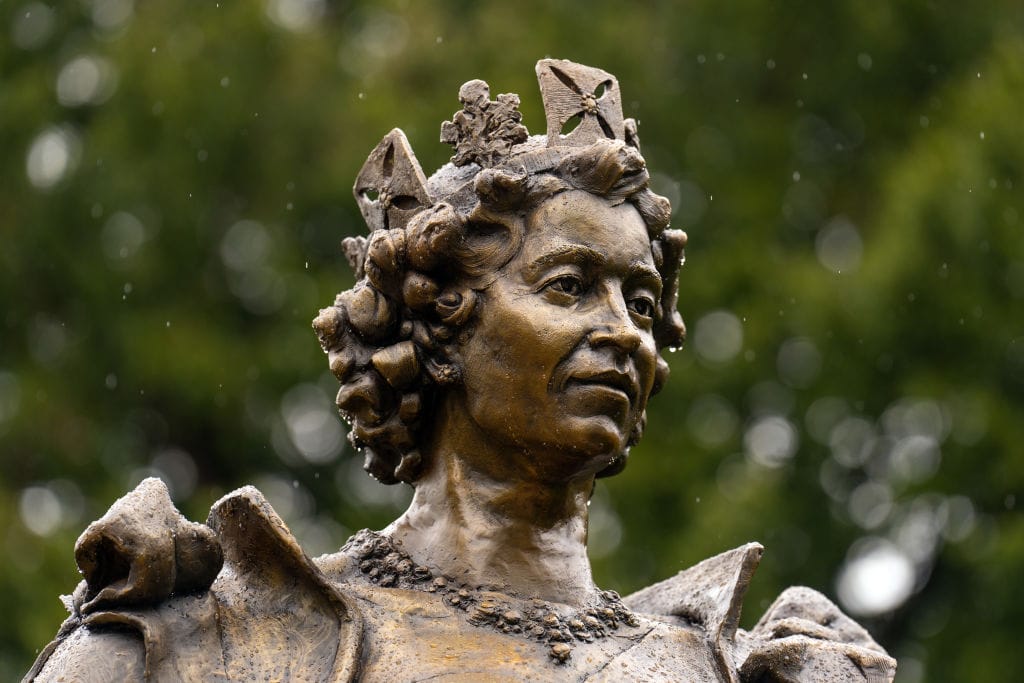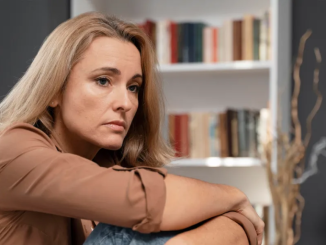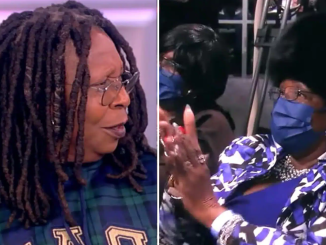
An orphan colt whose mother died shortly after giving birth has a new mom – a mare that had tragically lost her foal – thanks to the generosity of strangers and Washington State University veterinarians playing matchmaker.
Pairing an orphan foal and a nursing mare is a challenging task and one that commonly ends with failure. In this case, the connection was instantaneous.
“The mare had only been without a foal for about 24 hours,” Dr. Lisbeth Matthews, an equine medicine and surgery intern, said. “We walked her into the Veterinary Teaching Hospital and past him. He made a noise, and she went, ‘oh, there’s my foal,’ and started making noises back at him.”
It was a surprise to everyone how quickly the mare, named Shelly but affectionally called Mama by her owners, Roy and Faye Lions, accepted the colt. Equine veterinarian Jenifer Gold, who was helping to care for the foal and to supervise its introduction to the mare, said nursing mares frequently reject orphan foals, and when they don’t, the pairing process often takes days.
“She walked in and started nickering at him like it was her own baby – it was unbelievable,” Gold said. “I’ve been doing this for 20 years, and I have never seen it happen that way.”
The foal, which has been named Laredo, was admitted to the teaching hospital by his owner, Spokane resident Rachel Williams, just days after he was born when he started showing troubling digestive issues. Shortly after the colt arrived in Pullman, Faye Lions placed a call to WSU to see if the equine team was aware of any orphan colts needing a nursing mare.
“Our foal was dead, and nothing was going to bring it back, so we were hoping we could help someone else,” Faye Lions said. “It just so happened there was a foal there.”
A day later, the colt and Shelly were introduced.
“For them to be so willing to basically hand over their animal to a complete stranger after experiencing their own tragedy was pretty phenomenal,” Williams said. “I feel like in this scenario it was the worst of the worst for everybody, but there was a little bit of silver lining to the story.”
Williams is also grateful for the care and treatment she and her foal received at WSU.
“I just can’t even find words to say how great the veterinarians at WSU were,” she said. “They went above and beyond. I am just happy I ended up at WSU. I am so glad we were able to match those two up – it is kind of a miracle.”
Shelly will live with Williams until the colt is ready to be weaned, likely in six months, before she will return to her home in Kamiah, Idaho.
“It will be tough to say goodbye because you just naturally start to bond with animals, and she has kind of been my lifesaver,” Williams said. “It will be bittersweet for sure, but I am sure her owners will be happy to have her back.”
During the spring, the equine team at WSU typically sees at least a handful of orphan foals. Equine medicine specialist Dr. Macarena Sanz said orphan foals can be fed a powdered milk formula designed for horses, but those raised by humans typically develop behavioral issues that can become problematic as the animal matures.
“They turn out to be socially weird, have no understanding of personal space, and they are more difficult to train,” WSU equine veterinarian Macarena Sanz said. “The fact that this orphan foal has a mare is really going to make a difference.”
Sanz strongly encourages owners to immediately call their veterinarian if a foal is orphaned, as early care is critical to the animal’s survival.
Newly-unveiled statue of Queen Elizabeth II includes her beloved pet Corgis

A great deal of people felt sorrow upon Queen Elizabeth II’s passing in 2022. She was adored by the public and the longest-reigning monarch in British history, having ruled for 70 years.
The late queen is now being honored with a monument that was recently unveiled, honoring her affection for her pet corgis!
The Queen’s new statue, together with her dogs
On Sunday, a 7-foot-tall bronze statue of Queen Elizabeth was unveiled in observance of the monarch’s 98th birthday.

In Oakham, England, the sculpture was made by artist Hywel Pratley and is situated close to the Oakham Library. It is Queen Elizabeth’s first ever permanent memorial.
Rutland City Council said that hundreds attended the unveiling. There was music from local school bands and bagpipers.
The most priceless feature of this new memorial is that the queen’s cherished Corgis pet is also depicted, immortalized in bronze by the monarch’s feet:

The city authority claims that local schoolchildren created the designs for the Corgi monuments.
In contrast to the many stern and imposing monuments of queens like Queen Victoria, Pratley stated he wanted the statue to portray the idea of Queen Elizabeth as “an almost motherly figure,” according to the New York Times.
During the unveiling, local dignitary Sarah Furness remarked, “What most of us remember about Queen Elizabeth is her warmth.” “We demonstrate Queen Elizabeth’s humanity by showcasing her affection for dogs.”

The statue’s creator claims that he intended it to be hospitable to onlookers. Pratley said, “We designed it with a bench you can sit on.” “And there’s a corgi you can pet, and I do believe that this will eventually become a selfie-encouraging statue.”
The Times reports that a number of Corgi owners brought their dogs to the unveiling, indicating that a large number of people have already visited the statue.
The history of Queen Elizabeth’s Corgis pet
For many years, the Queen’s corgis were an iconic aspect of her life and a solace during tough political and personal times. Fans all throughout the world were likewise pleased by the cute pets.
The first Corgi was acquired by the royal family in 1933 when Dookie, a dog owned by Elizabeth’s father and predecessor George VI (who was then the Duke of York), was brought home.

Dookie was reportedly extremely cantankerous, yet Elizabeth and him appeared to have a unique relationship.
Then, on her eighteenth birthday, the Queen received a Pembroke Welsh corgi of her own, named Susan.
Susan reportedly slipped under a rug in the royal carriage to disrupt the wedding of the Queen and her husband, Prince Philip, according to the BBC.
1959 saw Susan’s death at the age of almost fifteen. Her epitaph referred to her as “the faithful companion of the Queen,” and she was laid to rest at the royal estate of Sandringham House.
The Queen stated, “I had always feared losing her, but I am ever so thankful that her suffering was so mercifully brief.”
But Susan left quite the legacy; during the ensuing few decades, the Queen accumulated over thirty corgis, all descended from her original canine companion.
The Queen always had at least one corgi, and often had several at once, from 1933 until 2018. She traveled with the dogs in tow, and they resided in a designated “Corgi room” at Buckingham Palace with wicker beds. It is said that the Queen took care of them personally and baked them biscuits over the holiday season.

These canines undoubtedly received royal treatment and grew to represent the Queen throughout her life.
While Elizabeth valued the dogs greatly, Prince Philip apparently didn’t feel the same way. Like many others, she took great solace from the dogs, who served as a link to the simpler times in her early years due to their relationship with her late father and her upbringing.
According to Penny Junor, a royal biographer, “her corgis are hugely important to her.” Over time, they have become more intimate with her than any human has ever been. She has never been let down by the incredibly affectionate and devoted corgis.

It also makes sense that the Queen, who represents both Britain and the United Kingdom, would have a strong bond with a quintessential British dog. Wales, a member of the UK and a neighbor of England, is where corgis first originated. When corgis were adopted as royal dogs, the breed was rare in England; yet, the Queen had a major role in the globalization of the breed.
The Queen owned several “dorgis,” or corgis bred with daschshunds, in addition to purebred Pembroke Welsh Corgis.
When the corgis and dorgis appeared alongside Queen Elizabeth on the cover of Vanity Fair in 2016, they became well-known worldwide because to Annie Leibovitz’s photography. At the time, the dogs were Candy, Vulcan, Willow, and Holly.
A notable aspect of Queen Elizabeth’s reign and a significant aspect of her life were her corgis. Their inclusion in this first memorial statue of her seems so fitting.
Please tell this tale!




Leave a Reply